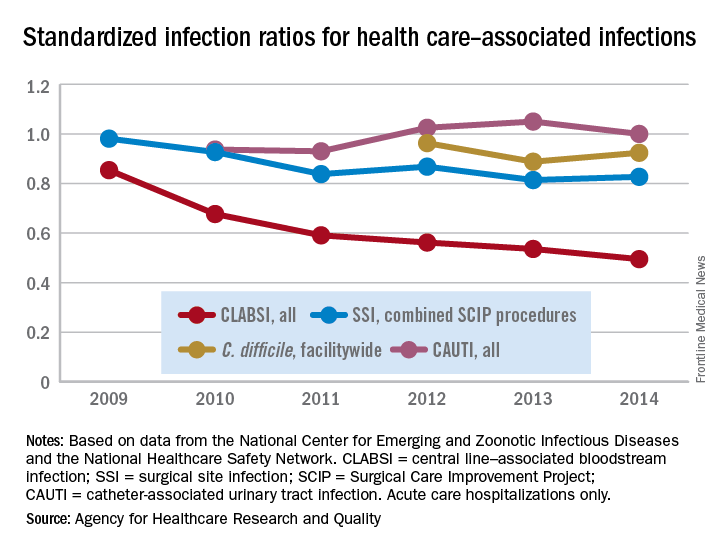The standardized infection ratio (SIR) for central line–associated bloodstream infections dropped 42% from 2009 to 2014, according to the Agency for Healthcare Research and Quality.
For acute care hospitalizations, the SIR for central line–associated bloodstream infections (CLABSIs) fell from 0.854 in 2009 to 0.495 in 2014. Over that same time period, the SIR for surgical site infections involving Surgical Care Improvement Project procedures decreased from 0.981 to 0.827 – almost 16%, the AHRQ said in its annual National Healthcare Quality and Disparities Report.
From 2010 to 2014, the SIR for catheter-associated urinary tract infections increased 6.7% from 0.937 to 1.000, but that change was not significant. For laboratory-identified hospital-onset Clostridium difficile infection, the SIR dropped from 0.963 to 0.924 – about 4% – from 2012 to 2014, the AHRQ reported using data from the National Center for Emerging and Zoonotic Infectious Diseases and the National Healthcare Safety Network.
For CLABSIs and surgical site infections, the SIR compares the observed number of infections in a given year to the predicted number of infections based on a reference period (January 2006 to December 2008). The referent period is calendar year 2009 for catheter-associated urinary tract infections and January 2010 to December 2011 for C. difficile infections. The Surgical Care Improvement Project procedures used in the measurement of surgical site infections include 10 common surgeries, such as abdominal aortic aneurysm repair, colon surgery, and hip arthroplasty.

